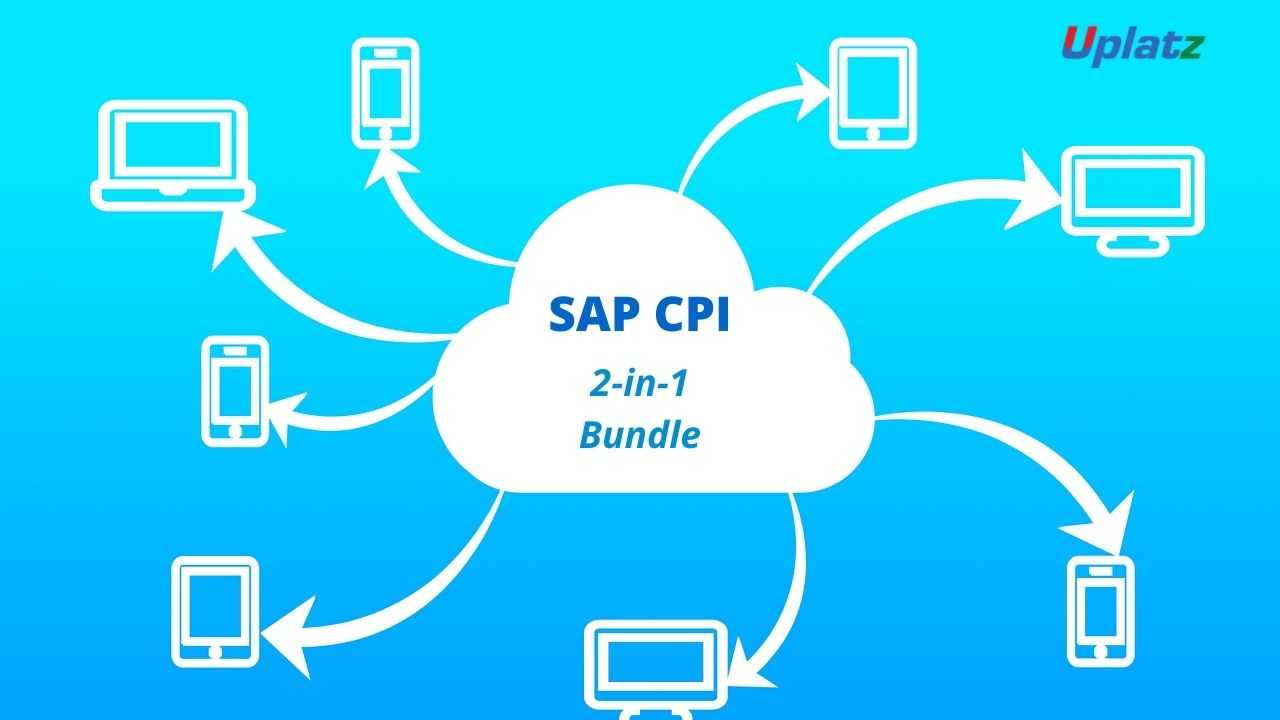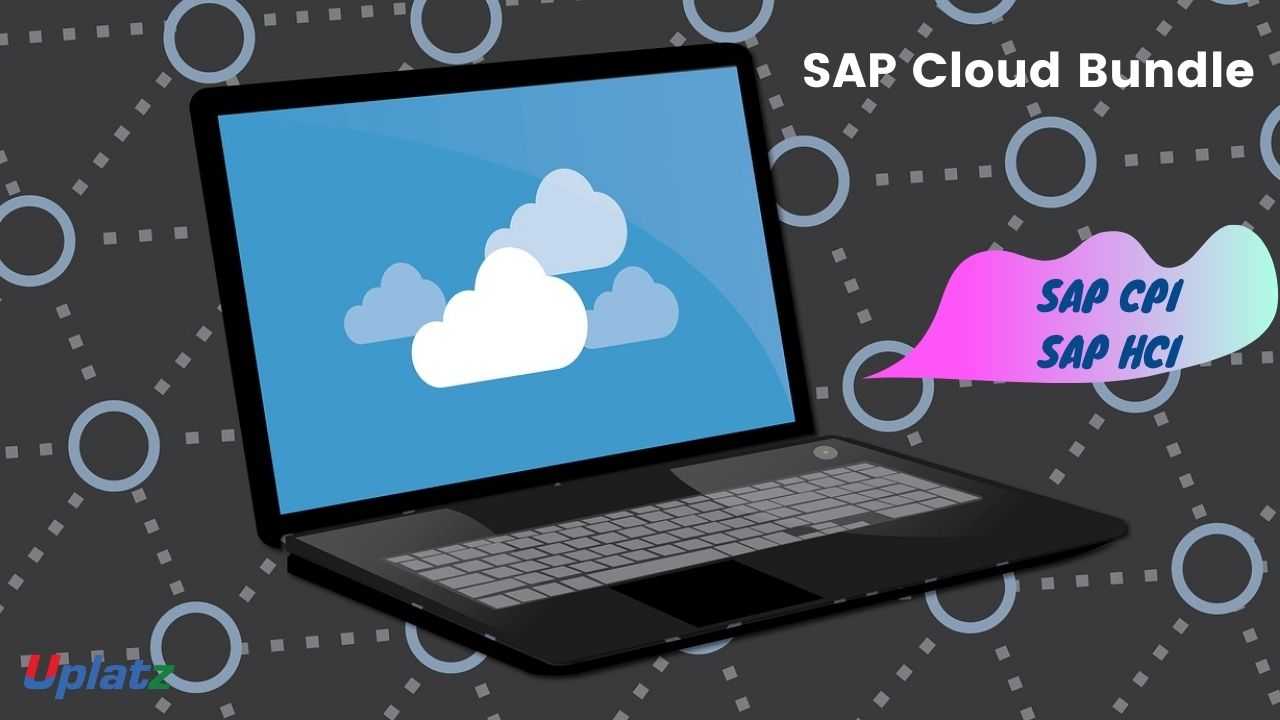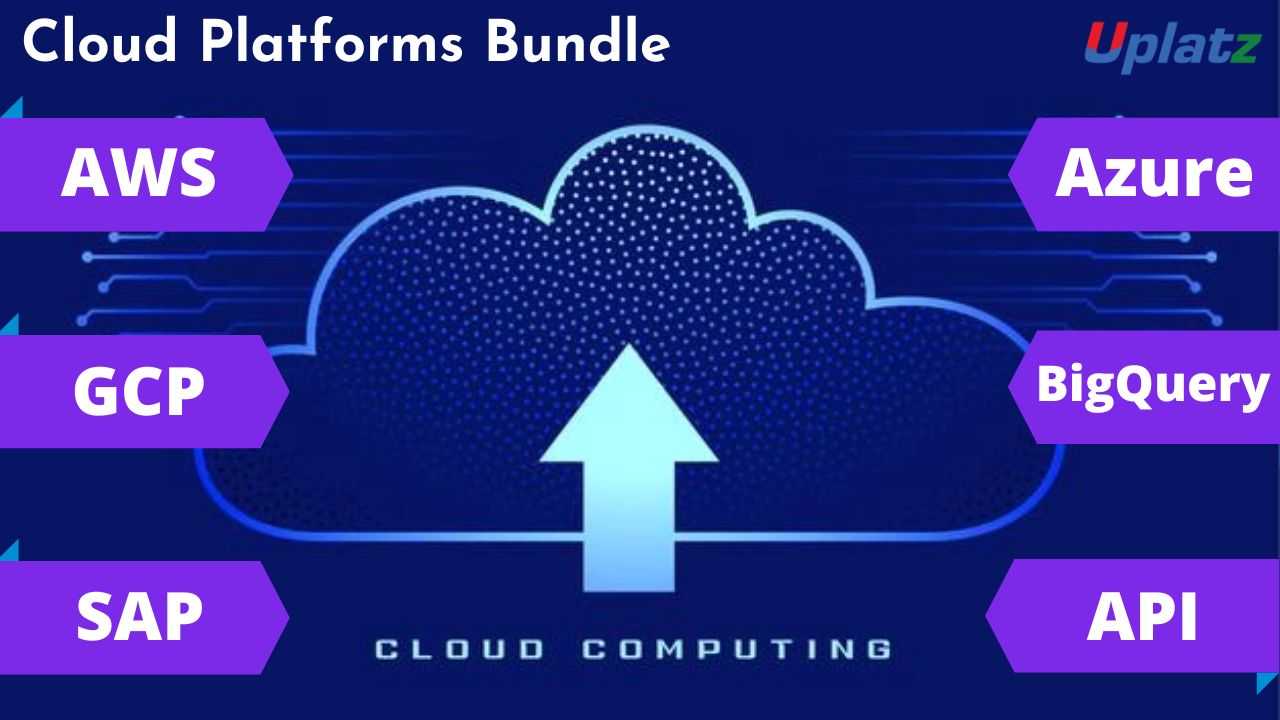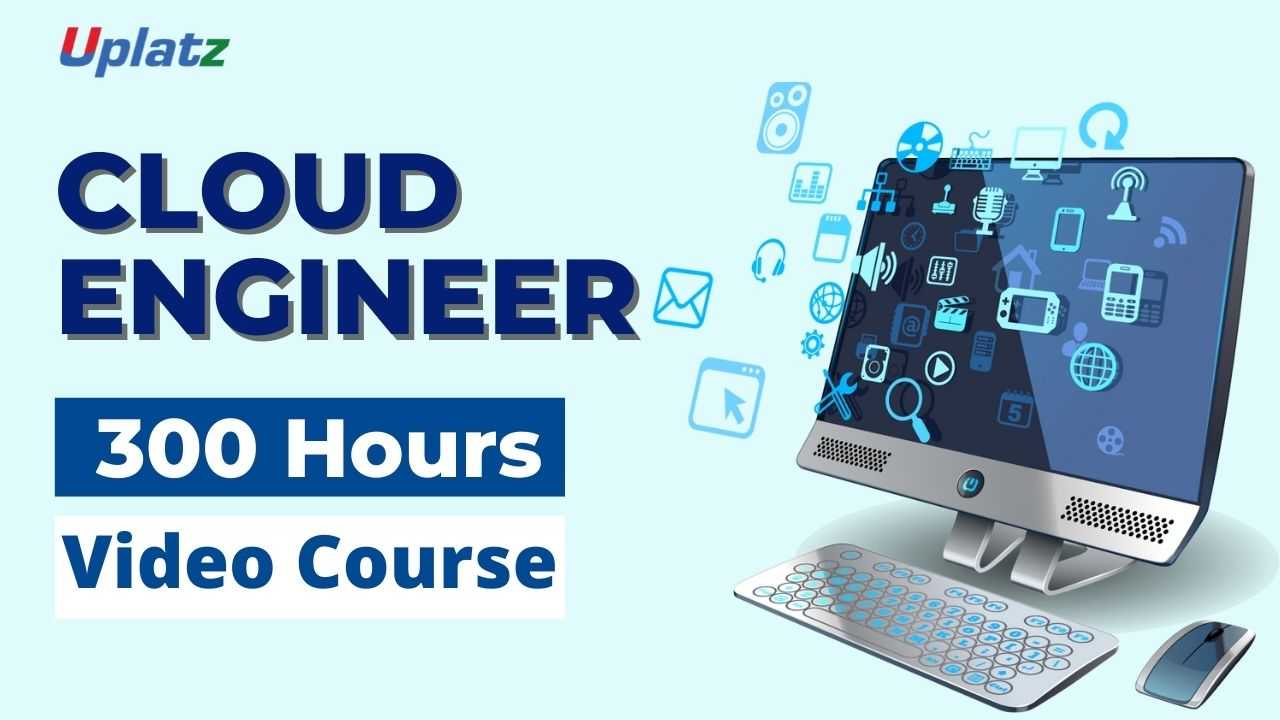Bundle Multi (2-in-1) - SAP CPI
Understand of SAP CP Integration. Participants will gain complete knowledge on how to create integration flows. View Course Curriculum
Price Match Guarantee
Full Lifetime Access
Access on any Device
Technical Support
Secure Checkout
Course Completion Certificate
View Course Curriculum
Price Match Guarantee
Full Lifetime Access
Access on any Device
Technical Support
Secure Checkout
Course Completion Certificate
 81% Started a new career
BUY THIS COURSE (
81% Started a new career
BUY THIS COURSE (GBP 22 GBP 49 )-
 96% Got a pay increase and promotion
96% Got a pay increase and promotion
Students also bought -
-

- Bundle Course - SAP Cloud (CPI - HCI)
- 50 Hours
- GBP 22
- 165 Learners
-

- Bundle Course - Cloud Platforms
- 150 Hours
- GBP 22
- 1327 Learners
-

- Career Path - Cloud Engineer
- 300 Hours
- GBP 32
- 4412 Learners

The SAP CPI (Cloud Platform Integration) – Bundle Multi (2-in-1) course by Uplatz is a comprehensive self-paced learning program that brings together two distinct training tracks delivered by experienced instructors. It provides an immersive and practical understanding of SAP Cloud Platform Integration—catering to learners at all levels, from foundational concepts to advanced integration scenarios.
This bundled course includes:
- SAP CPI (Cloud Platform Integration) – a structured overview ideal for beginners.
- SAP CPI (Basic to Advanced) – a deep-dive course designed for experienced users aiming to master real-world cloud integration complexities.
SAP CPI, part of the broader SAP Business Technology Platform (SAP BTP), is a robust Integration Platform-as-a-Service (iPaaS) solution that enables organizations to seamlessly connect SAP and third-party applications in a hybrid IT landscape. SAP CPI simplifies the development, execution, and monitoring of integration flows (iFlows) that connect cloud and on-premise systems. It supports various communication protocols and comes equipped with out-of-the-box connectors, mapping tools, and robust security features.
In today's digital-first business environment, organizations must integrate systems across departments, cloud services, and business partners. SAP Cloud Platform Integration plays a critical role in this process by enabling process integration and data integration through standardized interfaces and prepackaged integration content from the SAP API Business Hub. Whether connecting SAP S/4HANA with SuccessFactors, integrating with non-SAP solutions like Salesforce, or automating workflows across platforms, CPI serves as the central integration engine.
This Uplatz training bundle is tailored for integration consultants, developers, and architects who are responsible for designing, building, deploying, and maintaining end-to-end integration scenarios. The course is delivered through high-quality video tutorials, which you can access at your convenience via Google Drive once you’ve completed your enrollment. The dual-perspective from two instructors enriches the learning experience, offering varied teaching styles, use cases, and insights into real-time problem-solving.
You will learn how to build iFlows using the SAP CPI Web UI, apply routing logic, perform data mapping (via Message Mapping and XSLT), configure adapters (such as HTTPS, IDoc, SOAP, and OData), and implement error handling strategies. Advanced topics like exception subprocesses, Groovy scripting, parallel processing, and security configurations are also thoroughly covered.
This course emphasizes a hands-on, project-driven approach. You will work on real-world scenarios including cloud-to-cloud and cloud-to-on-premise integrations. The inclusion of exercises, demonstrations, and best practices ensures that you are not just consuming theoretical content but also building practical skills that are job-ready.
Whether you're preparing for the SAP CPI certification, moving from SAP PI/PO to CPI, or enhancing your cloud integration expertise, this course provides everything you need to succeed. Upon completion, you’ll be able to confidently design and execute scalable integrations that align with modern enterprise demands.
With lifetime access to course materials and ongoing support from Uplatz, this program ensures you are equipped with both the conceptual clarity and technical ability to excel in the evolving world of SAP Cloud Integration.
Course/Topic 1 - SAP CPI - all lectures
-
This tutorial gives you a comprehensive coverage of concepts of SAP Cloud and makes you comfortable to use it in your software development projects.
-
SAP Cloud Platform is a cloud-based tool to develop and deploy custom applications. This includes full range of service catalog including database, storage and backup of data, reporting service and transaction layer to develop multi-platform software development.
-
This tutorial has been prepared for professionals who aspire to learn the fundamentals of Cloud Platform and application development. Consultants and project team members who have already been a part of SAP application development can draw benefits from this tutorial and refresh their knowledge.
-
Before getting started with SAP CPI module we have to understand what is SAP CPI (Cloud Platform Integration) properly. This video highlights the misconceptions that you might have and need to understand before dealing with CPI.
-
In this tutorial, you'll learn how to integrate SAP Cloud Platform.
-
In this tutorial, you configure and test Azure AD single sign-on in a test environment SAP Cloud Platform supports SP initiated SSO
-
To configure the integration of SAP Cloud Platform into Azure AD (Active Directory), you need to add SAP Cloud Platform from the gallery to your list of managed SaaS apps.
-
Configure and test Azure AD SSO with SAP Cloud Platform using a test user called B. Simon. For SSO to work, you need to establish a link relationship between an Azure AD user and the related user in SAP Cloud Platform.
-
SAP Integration Suite provides the most effective customized performances report of its current customers, and it's great for multiple organizations looking for a right platform as a service solution.
-
SAP Cloud is a nice product in the market and is very helpful for SAP's business, and it also gives the most effective services to the customers. SAP Cloud or SAP Integration Suite is an enterprise integration platform as a service. It allows connecting all software, apps, employees and different departments of the organization through unlimited IT facilities.
-
SAP CPI is a complex system. There are some areas that you must understand what mean before you start creating your first real project. If not you are going to spend too much time on something that will not help your project. And it will be difficult to understand how to get started.
-
SAP Cloud platform offers PaaS based in-memory and microservice based mobile enabled cloud applications. SAP Cloud Platform provides you an option to control your choice of clouds, frameworks, and applications.
-
SAP Cloud Platform Cockpit is the central Web-based user interface for administrators, and you can use this for providing access to various functions for configuring and managing applications using SAP Cloud platform
-
As part of SAP Cloud Platform Integration suite, SAP offers a lightweight integration software which is called SAP Cloud platform Integration for Data Services CPI-DS (Formerly called as HCI-DS).
-
The SAP Data Services agent facilitates the interaction of CPI-DS on-cloud with systems in Local landscape. It must be installed and configured for enabling data movement between on-premise and cloud systems.
Course/Topic 2 - SAP CPI (basic to advanced) - all lectures
-
This will be a Full-fledged SAP CPI Tutorial for Beginners; we will learn everything from basics to advanced. main Index for the updated SAP CPI Tutorials Index. Before getting started it’s very important to know the basics of Cloud platform Integration. SAP CPI also is known as HCI is a cloud platform which provides a variety of service.
-
SAP CPI offers you to integrate or extend with SAP Business Suite, S/4 HANA, 3rd party integration. SAP created all the platforms to the cloud which is SAAS, like API management, like Hybrid Landscapes, etc. which includes sap cloud apps
-
Before getting started with SAP CPI Tutorials we have to understand what is SAP CPI (Cloud Platform Integration) properly. The below are the misconceptions which you need to understand before dealing with CPI.
-
SAP Cloud Platform is designed to be open and flexible, with different methods for consuming cloud services, open APIs and tools like the software developer's kit (SDK) for Apple iOS systems.
-
SAP CPI is a cloud-based integration platform running on the SAP HANA Cloud Platform for integrating cloud applications with other cloud and on-premise solutions. SAP CPI Cloud Integration allows you to quickly and seamlessly connect your cloud applications to other.
-
The pre-packaged content from SAP provides integration flows for integrating master and transactional data. It provides the connectivity support of IDOCs (connecting to the on-premise SAP CRM and SAP ERP systems) and SOAP over HTTPs (connecting to the Cloud for Customer scenario).
-
In this session we will cover end to end configuration to set up the SAP Cloud Integration (CF) for TMS.
-
In order to make the platform accessible to the broadest possible group of customers, SAP tries to support many open standards and known interfaces.
-
The aim of the partnership is to create a new iOS software development kit based on the SAP Cloud Platform Integration. This should make it possible to develop required business applications for the iPad or iPhone faster and more efficiently.
-
In addition to ready-made integration packages, SAP also offers special tools that work with AI support. In addition, different tools can be integrated into the platform and the integration of SAP Data Services and SAP Process Orchestration is also made available conditionally.
-
The SAP CPI supports a wide variety of APIs such as the Open Data Protocol (OData), Representational State Transfer (REST), Remote Function Call or Web Services.
-
As usual for SAP, the platform's on-demand applications also work with the highest security standards.
-
SAP Cloud Platform Integration manages to bundle the different applications on one platform. This leads to more transparency and also simplifies the monitoring of the individual applications.
-
SAP CPI offers different tools and supports different APIs. Java, Node.js, PostgreSQL as well as HTML5, RabbitMQ, Redis or server-side JavaScript can be used.
-
As usual for SAP, the platform's on-demand applications also work with the highest security standards. All servers are operated in dedicated data centres that have the latest security standards and also meet the ISO standard.
-
The platform is not only suitable for existing customers, but for all companies that have a historically evolved IT landscape and thus have to maintain and monitor countless different interfaces.
-
The platform offers more than 1,000 different apps from SAP and third-party providers, which can be used immediately if required without additional development effort.
-
The integration content can be used extremely flexibly for individual projects or for entire systems and can be adapted to individual needs. The platform also focuses on the shared use of data.
-
SAP Cloud Platform Integration is a modern, high-performance integration and development platform for companies that want to bundle and develop their various applications and services centrally in one environment.
-
SAP Cloud Platform is a platform as a service (PaaS) that goal to provide the while customers develop new and existing applications. SAP Cloud Platform supports in-memory capabilities, core platform services use and unique microservices to mobile-enabled cloud applications in a secure environment. It targets enterprises by giving them quick solutions to their critical needs.
-
This tutorial has been prepared for professionals who aspire to learn the fundamentals of Cloud Platform and application development. Consultants and project team members who have already been a part of SAP application development can draw benefits from this tutorial and refresh their knowledge.
-
SAP Cloud Platform is a cloud-based tool to develop and deploy custom applications. This includes full range of service catalog including database, storage and backup of data, reporting service and transaction layer to develop multi-platform software development. This tutorial gives you a comprehensive coverage of concepts of SAP Cloud and makes you comfortable to use it in your software development projects.
-
In this session you will learn that SAP Cloud Platform (SCP) is a platform as a service developed by SAP SE for creating new applications or extending existing applications in a secure cloud computing environment managed by SAP. The SAP Cloud Platform integrates data and business processes.
-
SAP Cloud platform offers PaaS based in-memory and microservice based mobile enabled cloud applications. SAP Cloud Platform provides you an option to control your choice of clouds, frameworks, and applications.
-
SAP Cloud Platform is the central Web-based user interface for administrators, and you can use this for providing access to various functions for configuring and managing applications using SAP Cloud platform.
-
SAP Cloud Platform Integration (CPI), which is a new tool to make SAP Integrations with. Like a replacement of SAP PI/PO, though it has some different options and flows.
-
SAP CPI is one of the pieces of evidence to support this theory. This tool is meant to define the course of the process between systems, or in other words: to modify data or an algorithm for their processing.
-
SAP Cloud Integration for data services allows you to efficiently and securely use ETL (extract, transform, load) tasks to move data between on premise systems and the cloud. With SAP Cloud Integration for data services, you can replicate the data and define how the data is mapped to your database schema.
-
SAP public cloud application like SAP Integrated Business Planning for Supply Chain use SAP Cloud Integration for data services to integrate with the on-premise SAP system.
-
SAP Cloud Integration for data services represents the integration layer of a hybrid scenario. Monitoring it is relevant for all hybrid scenarios using this integration form. For SAP Cloud Integration for data services, we can collect exceptions in the tasks running in the service.
-
SAP Cloud Platform Integration service helps you to connect cloud and on-premise applications with other SAP and non-SAP cloud and on-premise applications. This service has the capabilities to process messages in real-time scenarios spanning different companies, organizations, or departments within one organization.
-
SAP CPI video is the present service in the market, there are a rich set of capabilities. Security performance and pre-package responsibilities which will inform to the cloud. The SAP Cloud Platform Integration is the service that is working on the cloud platform.
-
SAP CPI is designed as Integration Platform-as-a-Service (PAAS) which helps to integrate multiple independent systems/applications for a business process. CPI can do Cloud to Cloud, Cloud to On-premise, On-premise to On-premise and Hybrid model.
1).Describe SAP Cloud Platform Integration
2).Use the required Tools, Processes and Operations
3).Work with iFlows
4).Use the Prepackaged Content
5).Work with Adapters
6).Explain Security Aspects and Monitoring
7).Set up and use SAP Cloud Platform Integration in the Cloud Foundry and Neo environments
8).Model synchronous, asynchronous, and B2B integration scenarios
9).Learn to monitor, maintain, and secure integration flows
a).Introduction to SAP Cloud Platform Integration
a. Explore the SAP Cloud strategy
b. Explain the positioning of SAP Cloud Platform Integration in the SAP Cloud strategy
c. Explain the positioning within the Application Integration and Infrastructure
d. Perform a classification according to ISA-M
e. Explore use cases
b).Product Overview
a. Explain the integration Platform-As-A-Service
b. Explain the architecture
c. Get an overview about integration capabilities
d. Explain connectivity and converter options
e. Use development tools
c).Basic Building Blocks of an Integration Scenario
a. Explain the main phases of an integration project
b. Explore the elements of an integration flow
c. Use SAP Cloud Platform Integration, integration patterns
d).Twitter Basic Scenario, Foundation
a. Explore the complete sample process
b. Configure inbound communication
c. Configure outbound communication
d. Use events
e. Use persistence
e).Twitter Basic Scenario, Advanced
a. Use calls in an advanced integration scenario
b. Explain the camel message model
c. Manipulate the message with message transformers
d. Explain message converters
e. Use mappings
f. Use XST mappings
f).Twitter Scenario, Extended
a. Define message routers
b. Explain scripting in message processing
c. Define additional components
d. Specify the runtime configuration
g).Concepts of Secure Communication
a. Explain secure communication
b. Explore concepts of secure communication
c. Explain security elements related to the mail adapter
d. Explain the relation of security artifacts to integration flow configuration
h).Other Security Aspects
a. Explain the technical landscape
b. Explain data storage security
c. Perform user management for cloud integration
d. Add members to an account
i).Operations and Monitoring
a. Explain the operating model
b. Explain web-based monitoring
c. Explain APIs for monitoring
j).Additional Topics
a. Perform the complete neverbounce process
b. Explain content transport
c. Explain B2B support
d. Design cloud integration content for SAP Process Orchestration 7.5 SP10
a).The SAP CPI Certification ensures you know planning, production and measurement techniques needed to stand out from the competition.
b).CPI is a cloud based solution which allows orchestrating processes and integrating data with ease. By building data and application integration platforms in the cloud, SAP makes the integration really simple. CPI helps to connect cloud applications seamlessly with on-premise or cloud applications without extensive coding.
c).SAP Cloud Platform Integration is itself a cloud-based solution on the SAP Cloud Platform. Thus, SAP Cloud Platform Integration benefits from all the advantages just outlined and manages reliable message exchanges between all participants.
d).SAP Hana Cloud Integration in short is called CPI. The SAP CPI Training Completely concentrates on security including data segregation utilized by Success Factors, SAP Cloud for Customer, FSN, etc.
e).You need to generate the Certificate from it. Simplest method is to import a Passport as Key Pair in SAP CPI Keystore. Once it is imported click on Download certificate to get client certificate. This certificate will be used in SAP Keystore and Certificate to user mapping tab
f).Uplatz online training guarantees the participants to successfully go through the SAP CPI certification provided by Uplatz. Uplatz provides appropriate teaching and expertise training to equip the participants for implementing the learnt concepts in an organization.
g).Course Completion Certificate will be awarded by Uplatz upon successful completion of the SAP CPI online course.
The SAP CPI draws an average salary of $98,080 per year depending on their knowledge and hands-on experience. The SAP CPI job roles are in high demand and make a rewarding career.
SAP Cloud Platform Integration (CPI) is SAP's cloud-based middleware that connects users' SAP ERP systems with third-party products. These products can be cloud based, on-premises, SAP, or non-SAP. The service allows real-time data exchange between these systems.
It is not SAP PO in the cloud and it is not really a replacement of SAP PO. SAP CPI should be presented more like a new and a modern way of integration but it is not displacing the legacy solution as yet. It has a long way to go and better stability and robustness will help it to earn a good place in SAP landscape
Note that salaries are generally higher at large companies rather than small ones. Your salary will also differ based on the market you work in.
Question 1. Define Sap Analytics Cloud?
Answer:SAP Analytics Cloud refers to an all-in-one cloud platform offered as software program as a service (SaaS) especially for planning, business intelligence (BI), making plans and predictive analytics providing information discovery, facts visualization, simulation, what-if, forecasting besides the numerous different competencies. This has been built broadly speaking on SAP Cloud Platform, and this gives a complete, unified and relaxed public cloud analytics enjoy supposed for maximizing data-pushed decision making.
Question 2. Is The Sap Analytics Cloud Multitenant?
Answer :Yes, the SAP Analytics Cloud has been available as a public cloud (software program as a provider, multi-tenant) imparting. A ‘personal cloud’ (software program as a carrier, single tenant) is available as an option.
Question 3. Where Is Sap Analytics Cloud Hosted?
Answer :At gift, SAP Analytics Cloud functions at the runs on SAP Cloud Platform facts facilities everywhere in the international. SAP has also recently announced partnerships with Amazon Web Services (AWS), Google Cloud Platform (GCP) and Microsoft Azure for jogging SAP Cloud Platform and they also plan to run SAP Analytics Cloud on those IaaS platforms soon. Although there aren't any plans for running on other IaaS systems.
Question 4.How Can I Get Access To The Web Application Of Sap Cloud Platform Integration To Be Able To Configure The Cloud Integration Packages?
Answer :Initially SAP supported the provisioning of a SAP Cloud Platform Integration tenant with the assist of the net tooling functionality only, i.E., with none runtime node. At present, this supplying is unavailable. In case you have any SAP Cloud Platform Integration license, then you could use the Web Application of the SAP Cloud Platform Integration tenant you have.
Question 5.What Is The License Is Required For Using The Sap Cloud Platform Integration Feature?
Answer :The Cloud Integration Content Runtime can simplest be used collectively either with the SAP Process Orchestration or with SAP Process Integration. Either of the products is needed to be certified one at a time. Besides configuration of the cloud integration content in the new offering, the person will even require a SAP Cloud Platform Integration license.
Question 6.How Will I Know If Within The Sap Analytics Cloud, Is My Data Is Secure Within Sap?
Answer :SAP Analytics Cloud features solely on SAP Cloud Platform which frequently meets the global safety requirements.
Question 7.Does The Cloud Connector Send Data From On-premise Systems To Sap Cloud Platform Or The Other Way Around?
Answer :The connection is opened from the on-premise system to the cloud, but is then used inside the different route.An on-premise device is, in evaluation to a cloud system, normally located at the back of a restrictive firewall and its services are available via the Internet. This idea follows a extensively used sample often referred to as opposite invoke proxy.
Question 8.Is The Connection Between The Sap Cloud Platform And The Cloud Connector Encrypted?
Answer :Yes, by way of default, TLS encryption is used for the tunnel between SAP Cloud Platform and the Cloud Connector.
If used properly, TLS is a notably secure protocol. It is the industry wellknown for encrypted communique and also, as an instance, as a comfy channel in HTTPS.
Keep your Cloud Connector installation up to date and we can make certain that no weak or deprecated ciphers are used for TLS.
Question 9.Can I Use A Tls-terminating Firewall Between Cloud Connector And Sap Cloud Platform?
Answer :This isn't feasible. Basically, this is a preferred guy-in-the-middle assault, which does not permit the Cloud Connector to set up a mutual agree with to the SAP Cloud Platform aspect.
Question 10.What Is The Oldest Version Of Sap Business Suite That's Compatible With The Cloud Connector?
Answer :The Cloud Connector can join an SAP Business Suite gadget version four.6C and more moderen.









